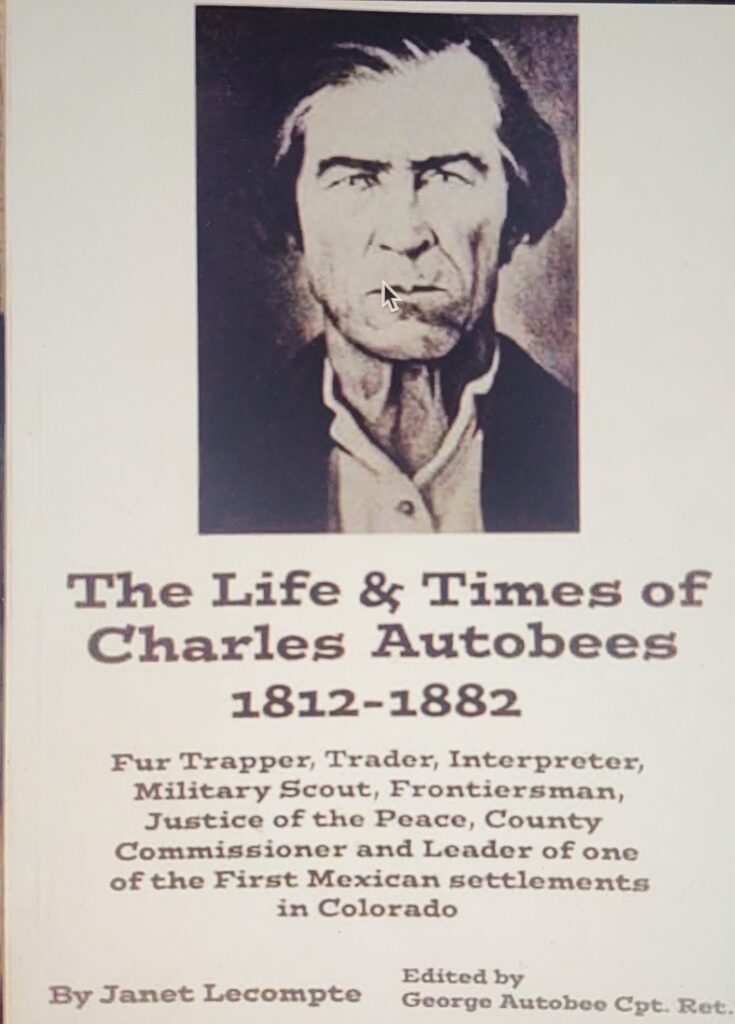The city of Pueblo, after 153 years, will finally have on permanent display timeless and historic statues reflecting its historic, Hispanic pioneer roots. At 11:00 a.m., Saturday, May 6th, the official unveiling of three statues will take place at the Walk of Legends next to the El Pueblo Museum. The walkway connects to the Museum the original border between the U. S. and Mexico.
The statues are of Charles Autobee, Teresita Sandoval and Marcelino Baca. Their presence will shed light on three individuals whose roles in the city’s founding have, for the most part, been under reported even among Pueblo natives. Of course, that would not include at least two descendants of one of the iconic bronzes.
Pueblo natives Jeanette Autobee Garcia and George Autobee have known of their long-ago relative for years. “It’s hard to believe,” said Garcia, “when you’re in fourth grade that you have a relative who’s in a book.” Garcia’s ancient relative, Charles Autobee, was a frontiersman trapper, scout and interpreter who makes a brief appearance in a long-ago Colorado History book once mandatory in state public school curriculum.
Garcia first learned of her legendary ancestor through stories her late father, Joe Autobee, would tell. The stories, told decades ago, still resonate and, in a mental transference, remind her of her own father. “His (Charles Autobee) personality was very much like my dad’s. He was friends with many Indians…he was tall and a brilliant man who may have been illiterate in writing, but his sense of intelligence came across clearly to those who knew him.”
Marine Corps veteran, George Autobee, who has even written a book about his trapper/scout relative, says the statue of Charles Autobee means he is finally getting the recognition he deserves. “To tell you the truth, his statue is long overdue. We (Hispanics) were the ones who settled this area and are finally getting recognition.”

Born in 1812, the young Autobee made his way west from St. Louis, Missouri. His life story reads almost as if written for Disney. It is said that Autobee, along with being an extraordinary trapper and fur trader, also sold whiskey up and down the Santa Fe Trail, from Taos all the way to what is now Pueblo. He also spoke several languages, including a variety of Native American dialects along with Spanish. Later in life, he became Huerfano County’s first commissioner. He is also said to have married a number of times with several of his brides Native American.
His bronze was done by noted sculptor, Dustin Payne, famous for his many portrayals of iconic Western figures. Payne’s work earned him a 2021 Gold Medal from the Cowboy Artists of America.
The plaque next to the statue of Teresita Sandoval will tell the story of a woman born in Taos, New Mexico, in 1811. Sandoval wore many hats over her lifetime, including those of mother, farmer, rancher and entrepreneurial trader whose business was conducted across northern New Mexico and southern Colorado. She eventually settled permanently in what is now the city of Pueblo where she was instrumental in establishing the trading post that bears the name Fort El Pueblo. Her statue was sculpted by noted artist Deon Duncan.
Marcelino Baca was said to be not just a fur trapper, but “the best,” in the business. Baca was born in 1808 in Taos, and hunted and traveled the Santa Fe Trail collecting his product and later selling it in the region and all the way to the north to what was then the very embryonic Fort Pueblo Trading Post. Baca died in 1894. His statue was done by noted San Luis artist Humberto Maestas.
Maestas, whose work has sold internationally and holds its own special spot in the Vatican, says creating Baca’s image was a challenge because there is only one known photograph of the noted trapper and its quality reflects 19th century state of the art.
To create an image as close to real life as possible, Maestas bought a beaver hat to get that part of the piece correct. The face on the statue will be an amalgam of the real Baca and, because of the paucity of images to work with, Maestas himself. “So,” the San Luis artist told the Alamosa Citizen, “Marcelino Baca forever in history will look like me.” Maestas is also the artist responsible for San Luis’ Stations of the Cross.
Funds for the three statues were raised by the Pueblo Urban Renewal Authority.



